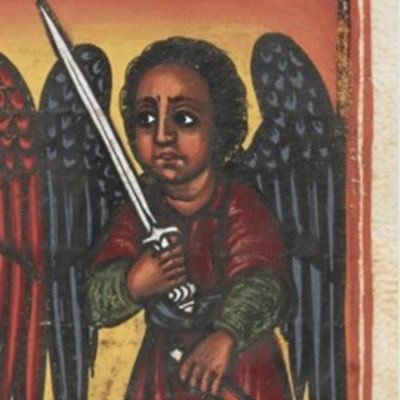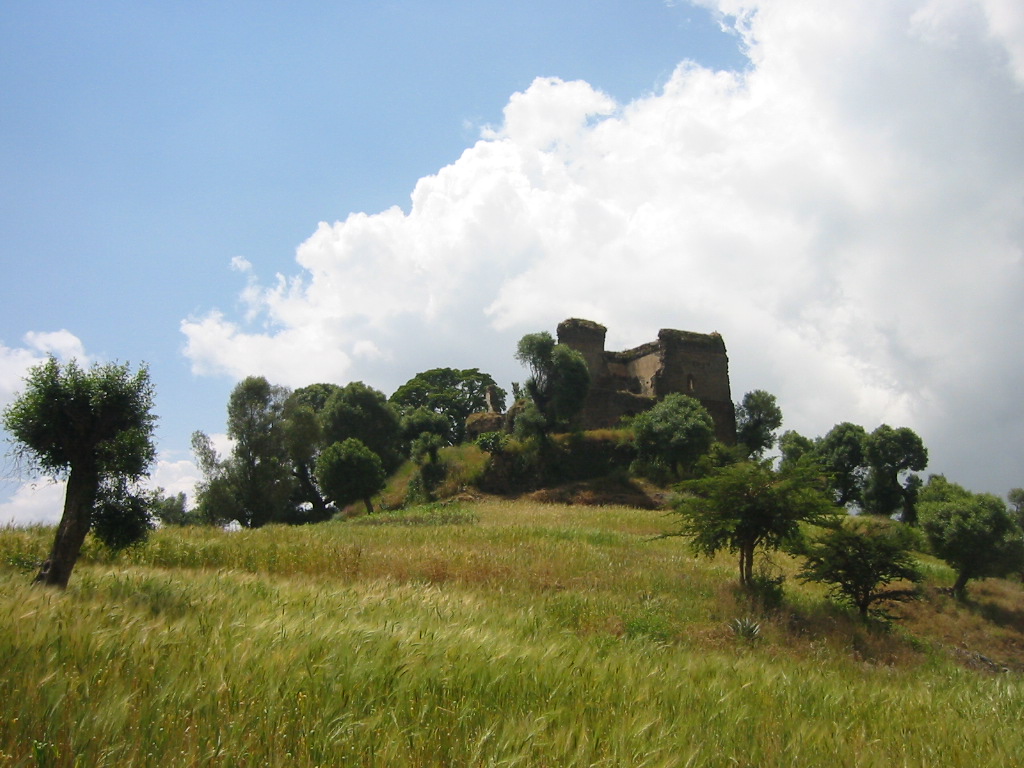|
Bur Province
Bur () was a large (vaguely delimited) historical province, across the present-day Ethio-Eritrean border. As happened with other regions, it was divided into Upper Bur and Lower Bur. Its territory covered parts of Agame, the entire Akele Guzay and lands further to the east, including perhaps even the Buri peninsula. The hagiography of Zemikael Aregawi narrates the people of Bur's rebellion against Kaleb. The same rebellion is recalled by the hagiographic tradition of the Sadqan, the "Righteous ones", who, before going to Metera, Bereknaha, Sorya, etc., together reached the "desert of Bur". Later, some other hagiographies indicate that from the 14th century Bur fell into the sphere of the Ewostateans' religious movement. In the first half of the 15th century. Bur seems to have been ruled by a ''shum'', whom ''atse'' Zera Yaqob put under the supremacy of the ''baher negash'', along with the governors of Shire, Hamasen and Seraye. In the time of ''atse'' Lebna Dengel, the office o ... [...More Info...] [...Related Items...] OR: [Wikipedia] [Google] [Baidu] |
Agame
Agame () was a former province in northern Ethiopia. It includes the northeastern corner of the Ethiopian Empire, borders Akele Guzai in Eritrea, Tembien, Kalatta Awlalo and Enderta in the south, and both the Eritrean and Ethiopian Afar lowlands in the east. This relative location of Agame is at the strategic crossroads between the Red Sea coast and the interior of southern Eritrea, on the one hand, and the northern Tigrayan plateau on the other. In pre-1991, Agame had a total area of about with an estimated population of 344,800. History 980 BC – 940 AD Agame is one of the oldest regions of Ethiopia, being part of the Kingdom of D'mt in northern Ethiopia and Eritrea that would develop into the Kingdom of Aksum. It was a main center of Aksumite culture (second only to Central Tigray, where the capital was located), with a distinct sub-culture that separated the two regions from that of Central Tigray ( Shire, Axum, Yeha), Central Eritrea (Seraye, Hamasien, Akele Guzai an ... [...More Info...] [...Related Items...] OR: [Wikipedia] [Google] [Baidu] |
Akele Guzai
The Provinces of Eritrea existed between Eritrea's incorporation as a colony of Italy until the conversion of the provinces into administrative regions. Overview In Italian Eritrea, the Italian colonial administration had divided the colony into eight provinces (administrative regions) called Akele Guzay, Barka, Denkalia, Hamasien, Sahel, Semhar, Senhit and Serae. These administrative regions relied heavily upon the historical political boundaries in the region, including, but not exclusively, that of local nobility. These Provinces of Eritrea were also used by the Federated Eritrean Government from 1952-1962 and as districts ( awrajja) in Eritrea when it was annexed by Ethiopia from 1962-1991. After independence, the Provisional Government of Eritrea converted the original eight Provinces of Eritrea (from the Italian colonial period) to nine provinces by splitting the Barka province in two (the north known as Barka Province and the south as Gash-Setit Province), while at the same ... [...More Info...] [...Related Items...] OR: [Wikipedia] [Google] [Baidu] |
Buri Peninsula
The Buri Peninsula extends from central Eritrea north into the Red Sea. Geography The Buri Peninsula is an area of land in the Ghela'elo Subregion of Eritrea, that juts out into the Red Sea. To its west lies the Gulf of Zula, also known as Annesley Bay, with the village of Arafali at its head. To the north of the peninsula is the Massawa Channel and a group of islands, the Dahlak Archipelago, the largest and closest to the mainland being Dahlak Kebir. To the east of the peninsula lies Howakil Bay, a broad bay, scattered with islands, the largest of which is Howakil Island, and to the south lies a ridge of low hills. The peninsula is generally low and undulating, composed of lava flows at the southern end and granite at the north. It is about long and wide, with a constriction wide in the middle. Further inland to the south are volcanic hills, some conical and others located on ridges, with small sandy plains between them. The highest mountains on the peninsula is Mount Abd ... [...More Info...] [...Related Items...] OR: [Wikipedia] [Google] [Baidu] |
Zara Yaqob
Zara Yaqob ( Ge'ez: ዘርዐ ያዕቆብ; 1399 – 26 August 1468) was Emperor of Ethiopia, and a member of the Solomonic dynasty who ruled under the regnal name Kwestantinos I (Ge'ez: ቈስታንቲኖስ, "Constantine"). He is known for the ge'ez literature that flourished during his reign, the handling of both internal Christian affairs and external Muslim aggression, along with the founding of Debre Birhan as his capital. He reigned for 34 years and 2 months. The British historian, Edward Ullendorff, stated that Zara Yaqob "was unquestionably the greatest ruler Ethiopia had seen since Ezana, during the heyday of Aksumite power, and none of his successors on the throne – excepted only the emperors Menelik II and Haile Selassie – can be compared to him." Ancestry Born at Telq in the province of Fatajar, Zara Yaqob hailed from the Amhara people and was the youngest son of Emperor Dawit I by his wife, Igzi Kebra. His mother Igzi lost her first son and having been ... [...More Info...] [...Related Items...] OR: [Wikipedia] [Google] [Baidu] |
Shire
Shire is a traditional term for an administrative division of land in Great Britain and some other English-speaking countries such as Australia and New Zealand. It is generally synonymous with county. It was first used in Wessex from the beginning of Anglo-Saxon settlement, and spread to most of the rest of England in the tenth century. In some rural parts of Australia, a shire is a local government area; however, in Australia it is not synonymous with a "county", which is a lands administrative division. Etymology The word ''shire'' derives from the Old English , from the Proto-Germanic ( goh, sćira), denoting an 'official charge' a 'district under a governor', and a 'care'. In the UK, ''shire'' became synonymous with ''county'', an administrative term introduced to England through the Norman Conquest in the later part of the eleventh century. In contemporary British usage, the word ''counties'' also refers to shires, mainly in places such as Shire Hall. In regions with ... [...More Info...] [...Related Items...] OR: [Wikipedia] [Google] [Baidu] |
Hamasien
The Provinces of Eritrea existed between Eritrea's incorporation as a colony of Italy until the conversion of the provinces into administrative regions. Overview In Italian Eritrea, the Italian colonial administration had divided the colony into eight provinces (administrative regions) called Akele Guzay, Barka, Denkalia, Hamasien, Sahel, Semhar, Senhit and Serae. These administrative regions relied heavily upon the historical political boundaries in the region, including, but not exclusively, that of local nobility. These Provinces of Eritrea were also used by the Federated Eritrean Government from 1952-1962 and as districts ( awrajja) in Eritrea when it was annexed by Ethiopia from 1962-1991. After independence, the Provisional Government of Eritrea converted the original eight Provinces of Eritrea (from the Italian colonial period) to nine provinces by splitting the Barka province in two (the north known as Barka Province and the south as Gash-Setit Province), while at the same ... [...More Info...] [...Related Items...] OR: [Wikipedia] [Google] [Baidu] |
Serae
The Provinces of Eritrea existed between Eritrea's incorporation as a colony of Italy until the conversion of the provinces into administrative regions. Overview In Italian Eritrea, the Italian colonial administration had divided the colony into eight provinces (administrative regions) called Akele Guzay, Barka, Denkalia, Hamasien, Sahel, Semhar, Senhit and Serae. These administrative regions relied heavily upon the historical political boundaries in the region, including, but not exclusively, that of local nobility. These Provinces of Eritrea were also used by the Federated Eritrean Government from 1952-1962 and as districts ( awrajja) in Eritrea when it was annexed by Ethiopia from 1962-1991. After independence, the Provisional Government of Eritrea converted the original eight Provinces of Eritrea (from the Italian colonial period) to nine provinces by splitting the Barka province in two (the north known as Barka Province and the south as Gash-Setit Province), while at the same ... [...More Info...] [...Related Items...] OR: [Wikipedia] [Google] [Baidu] |
Tigray Province
Tigray Province (Amharic and ), also known as Tigre ( tigrē), was a historical province of northern Ethiopia that overlayed the present day Afar and Tigray regions. Akele Guzai borders with the Tigray province It was one It encompassed most of the territories of Tigrinya-speakers (and a few minority groups) in Ethiopia. Tigray was separated from the northern Tigrinya speaking territories by the Mareb River, now serving as the state border to Eritrea (formerly Eritrea Province), with the Tekezé River separating it from the Amhara dominated south. The great majority of inhabitants were Orthodox Christians (95.5% in 1994), with the exception of a small, but important Muslim subgroup ( Jeberti) and a few Catholics (mainly Irob). Protestantism is only a very recent urban phenomenon. Despite a general impression of ethnic and cultural homogeneity, there were a few ethnic minorities, especially at the borders of Tigray, belonging to a non-Tigrinya groups, such as the Saho-speakin ... [...More Info...] [...Related Items...] OR: [Wikipedia] [Google] [Baidu] |
Gelawdewos
Galawdewos ( gez, ገላውዴዎስ, 1521/1522 – 23 March 1559) also known as Mar Gelawdewos ( amh, ማር ገላውዴዎስ), was Emperor of Ethiopia from 3 September 1540 until his death in 1559, and a member of the Solomonic dynasty. His throne name was Asnaf Sagad I (Ge'ez: አጽናፍ ሰገድ). A male line descendant of medieval Amhara kings, he was a younger son of Dawit II and Seble Wongel. Reign His reign was dominated by the struggle with Ahmad ibn Ibrahim al-Ghazi during the Ethiopian–Adal War until Ahmad's defeat and death in the Battle of Wayna Daga on 21 February 1543. Gelawdewos devoted time and energy to rallying his people against Ahmad, a determination his chronicler credits prevented Ahmad's forcible conversions from being permanent. With Ahmad's death, Gelawdewos was not only able to eject the leaderless Muslim forces from the Ethiopian Highlands, but also from the lowlands to the east, which included the Sultanate of Dawaro and Bale. He also tur ... [...More Info...] [...Related Items...] OR: [Wikipedia] [Google] [Baidu] |
Susenyos I
Susenyos I ( gez, ሱስንዮስ ; circa 1571-1575 – 17 September 1632), also known as Susenyos the Catholic, was Emperor of Ethiopia from 1606 to 1632, and a member of the Solomonic dynasty. His throne names were Seltan Sagad and Malak Sagad III. He was the son of '' Abeto'' Fasil, as well as the grandson of ''Abeto'' Yakob and the great-grandson of Dawit II. As a result, while some authorities list Susenyos as a member of the Solomonic dynasty, others consider him—rather than his son, Fasilides—as the founder of the Gondar line of the dynasty (which is, however, ultimately a subset of the Solomonic dynasty). The life of Susenyos is known through his chronicle, written by several official writers (''sehafe te’ezaz''). The Jesuits, who were closely associated with Susenyos’s reign, also left numerous documents on their mission in Ethiopia. Manuel de Almeida, a Portuguese Jesuit who lived in Ethiopia during Susenyos' reign, described the emperor as tall with the featu ... [...More Info...] [...Related Items...] OR: [Wikipedia] [Google] [Baidu] |





